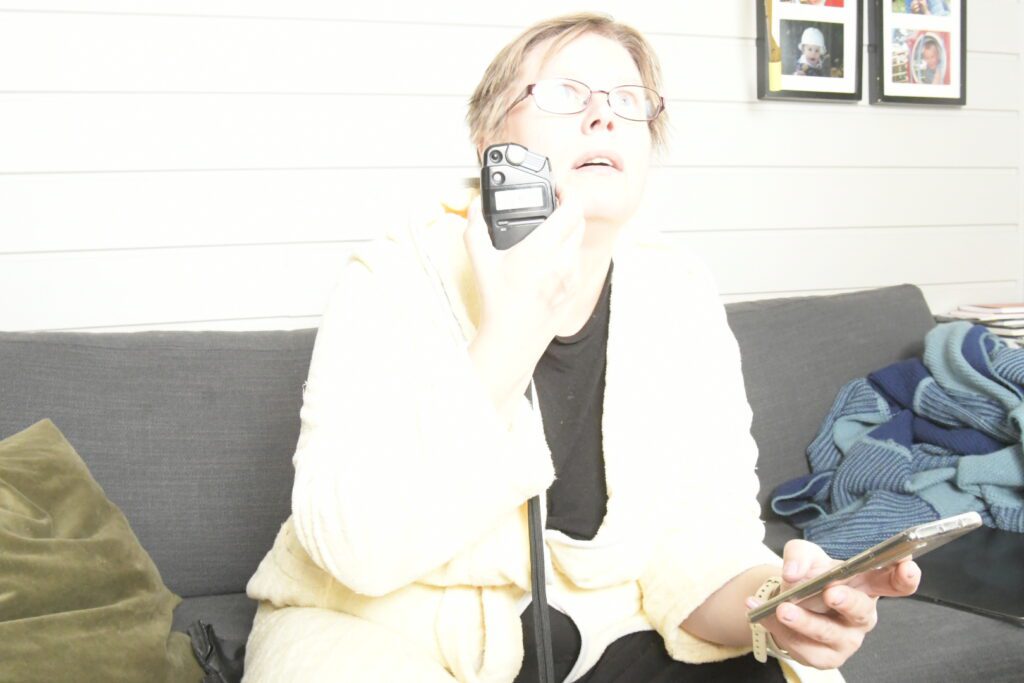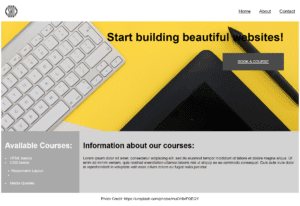A graphic designer is a designer and not an artist. I went to a IXDA Oslo session many years ago, and the speaker said that “a designer is a problem solver” and a graphic designer will then, by that definition, be a problem solver that solves problems in a visual way.
So – you don’t have to be good at drawing (but you must know how to sketch), but you must be creative. Creativity is yet another skill that can be trained. Again, luckily for me. There are many ways of being creative and generating ideas and many books have been written on the subject. In my graphic design class, the book “Creativity now”, by Jurgen Wulff is on the reading list. In chapter 2, he lists 25 techniques for generating ideas. Some of them are for developing new products or services, and some of them can be used also in my business when working with clients.
I have listed the ones I find most relevant for my work in Pixlweb.
Start with the end
With this ideation technique, you start to describe your desired outcome. For example, you would like your web-shop to drive higher income to your business. How do you achieve that? What would have to happen prior to this goal? I assume this one goal can/must have multiple things that must happen first. This could be 1) have a flawless checkout process which is easy and enjoyable to use (how do you achieve that?) 2) getting your brand known “out there” (how do you achieve that?) 3) attract the right people when you’re advertising (How do you achieve that?) – and so on – all the way to where I am today.
Apply the why, who, what, where and when questions
In this technique, you ask questions in a structured manner. For example, a service: Why this service and not another, who needs this service, what does the service contain, where is the service used and when is the service used. The same question concept is used for products as well.
Mind mapping
This technique is a way to explore your ideas in a more visual way. For example, if you’re exploring a concept or a topic, drawing boxes, lines and words on different branches. For example – if you are about to start a new business, and would like to get an overview of the services you may offer to clients, a mind map can help you to visualize this. You can do this on paper or use software.
Freewriting
Wolff describes this technique as “writing whatever comes to your mind for a set period of time”. When doing freewriting, you can limit your-self to certain topics (for example if you are writing for a business blog) or not.
Challenge every assumptions
In this technique, you challenge assumptions you have about the world and especially those who are holding you back. For example, if you believe that getting new clients is hard, and cold-calling them would irritate them, then you can try a different approach. Perhaps an exisisting client can be a referrer to a new (and cold) client.
Imagine someone else’s solution
In this technique, you imagine how another person would solve this – preferably a person that is successful in the field you want to succeed in or has a way of thinking that appeals to you. For example – you’re trying to create a new product. How would Steve Jobs approach this task and what would his solution be like?
Vary the attributes
In this technique, you take an existing product or service and make variations to it’s attributes. For example: change size, remove/add features/functionality, change color, make it more suitable for younger/older people, make it easier to access or use, make it more exclusive. The example used in Wulff’s book is an alarm clock. By making it big, it can be seen accross the room and in order to turn it off you have to leave bed. By making it smaller, it can fit into your pyjamas, your wrist watch. If you add a recorder, you can record any wake-up message you’d like, to make it more appealing for younger people you could change the shape and color to make it more playful. For older people, perhaps radio or quote of the day could be a desireable feature – and so on. I like this technique.
Combine products (or services. My addition)
If you combine the essence of two (or more) things, you can create something new. These things can be related or unrelated. In service design this approach is quite common.
Wulff has techniques to address bad habits. One of them is Teach you problem. You hold a lecture on your issue, for example, procrastination or over-eating, for a friend. At the end of the lecture, your friend hands you his or her notes, and your job is to do the opposite.
Another is one I’d like to try once: match your interests and your skills. On post-it notes, I should write down what I enjoy doing- 50 of them. On the next 50 notes, I should write down my skills. Draw one note from each pile and trying to combine what I enjoy doing with my skills. This can generate ideas on how to make money.
Another technique described is the repurpose technique – where you take your existing ideas, products, services or what-not and use it in a different way. For example, if you have a collection of blog posts on your website, then you can publish it as an ebook, create a podcast/webinars where you take about the same content and so forth (audio, video, print, live events). A side note: having a business blog can attract potential clients to your web site, and draw them into the sales funnel (AIDA for Attraction, Interest, Desire, Action).
Yet another technique I can apply for developing my own business is to get inspiration from successful business in my own or related business fields.
Now I am in Academic Week 01, also calaled AW01 in my graphic design education. Each week we get a list of tasks to perform. Some of them I have to publish in the blog, others are just for fun. The following are the “just for fun” tasks.
-
A man is replacing a wheel on his car, when he accidentally drops the four nuts used to hold the wheel on the car. They fall into a deep drain, irretrievably lost. A passing girl offers him a solution that enables him to drive home. What is it?
They went by her car
-
Two Russians walk down a street in Moscow. One Russian is the father of the other Russian’s son. How are they related?
She’s his wife.
-
What occurs once in June, once in July and twice in August?
The letter U
-
Six drinking glasses stand in a row, with the first three full of water and the next three empty . By handling and moving only one glass at a time, how can you arrange the six glasses so that no full glass stands next to another full glass, and no empty glass stands next to another empty glass? What is the minimum number of moves to solve this puzzle?
3. Let’s call them F1, F2, F3, E4, E5 and E6
- E6 to the left of F1 (the order is then E6, F1, F2, F3, E4, E5)
- F2 to the right of E5 (the order is then E6, F1, F3, E4, E5, F2)
- E4 (or E5) takes F2’s place between F1 and F3 (the order is now E6, F1, E4, F3, E5, F1)
This one was hard. fThere are F and E glasses next to each other, but I thought that the original order of the glassess are not changed, it would be okay. That was a wrong assumption. I googled the solution and it can be done in 1 move: You take F2 and pour it’s content into E5. Technically you are handling the class, but you are not moving it. It remains in the same spot.



